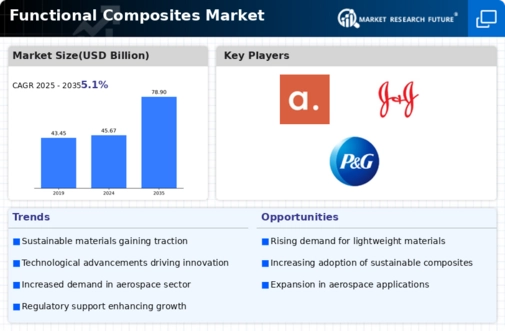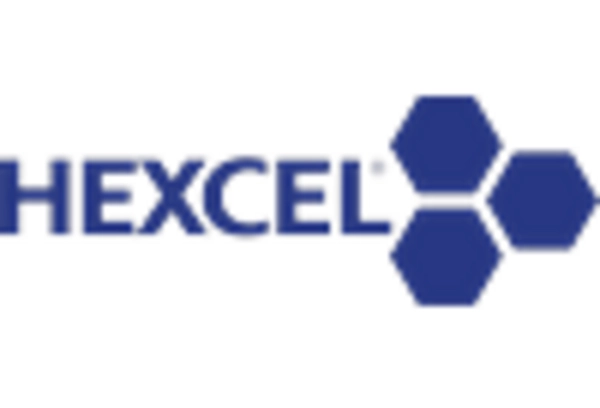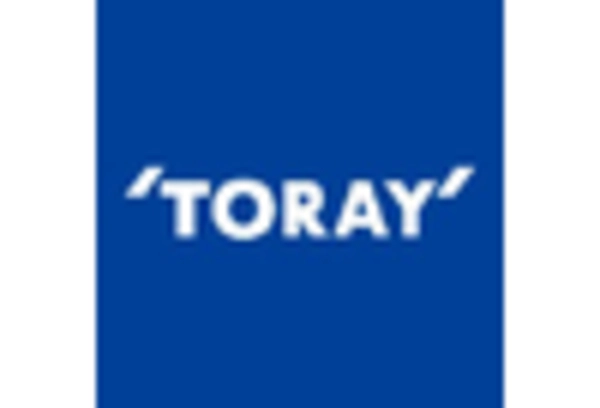The functional composites market is currently characterized by a dynamic competitive landscape, driven by innovation, sustainability, and strategic partnerships. Key players such as Hexcel Corporation (US), Toray Industries (JP), and DuPont de Nemours, Inc. (US) are actively shaping the market through their distinct operational focuses. Hexcel Corporation (US) emphasizes advanced materials for aerospace and automotive applications, leveraging its expertise in carbon fiber technology. Meanwhile, Toray Industries (JP) is concentrating on expanding its portfolio of high-performance composites, particularly in the automotive sector, to meet the growing demand for lightweight materials. DuPont de Nemours, Inc. (US) is focusing on sustainable solutions, integrating eco-friendly practices into its product development, which aligns with the increasing regulatory pressures and consumer preferences for greener alternatives. Collectively, these strategies contribute to a competitive environment that prioritizes innovation and sustainability.
In terms of business tactics, companies are increasingly localizing manufacturing to enhance supply chain resilience and reduce lead times. This approach appears to be a response to the complexities of global supply chains, which have been under scrutiny in recent years. The market structure is moderately fragmented, with several key players holding substantial market shares, yet there remains room for smaller firms to innovate and capture niche segments. The collective influence of these major companies is significant, as they set industry standards and drive technological advancements.
In October 2025, DuPont de Nemours, Inc. (US) announced a strategic partnership with a leading automotive manufacturer to develop next-generation composite materials aimed at reducing vehicle weight and enhancing fuel efficiency. This collaboration is pivotal, as it not only reinforces DuPont's commitment to sustainability but also positions the company at the forefront of innovation in the automotive sector, potentially leading to increased market share.
In September 2025, Hexcel Corporation (US) unveiled a new line of carbon fiber composites designed specifically for electric vehicle applications. This launch is strategically important as it aligns with the growing trend towards electrification in the automotive industry, allowing Hexcel to capitalize on emerging market opportunities and strengthen its competitive position.
In August 2025, Toray Industries (JP) expanded its production capacity for advanced composites in North America, reflecting a strategic move to meet the rising demand from the aerospace and automotive sectors. This expansion is likely to enhance Toray's market presence and operational efficiency, enabling the company to respond more effectively to customer needs and market dynamics.
As of November 2025, the competitive trends in the functional composites market are increasingly defined by digitalization, sustainability, and the integration of artificial intelligence. Strategic alliances are becoming more prevalent, as companies seek to leverage complementary strengths to enhance their product offerings and market reach. Looking ahead, competitive differentiation is expected to evolve, shifting from traditional price-based competition to a focus on innovation, technological advancements, and supply chain reliability. This transition underscores the importance of agility and responsiveness in a rapidly changing market landscape.

















Leave a Comment